“Damn clouds.”
In a demonstration of what may be one of my most regrettable and predictable behaviors, burdened by the lowering of light level as a cloud moved between me and the sun, I glanced towards the heavens to assess the duration of the timeout at hand, only to be temporarily blinded by that big ball of fire in the sky as it slipped behind the veil.
“Now I definitely can’t see anything.”
I hadn’t made a cast in minutes as I pushed my Hog Island Skiff down a gravel flat covered by a foot or two of water on a large Virginia Piedmont river, scanning, visually sorting waving fronds of stargrass and the shadows they spawn, cobble rock, the odd foraging muskrat, and half-buried wood on the riverbottom from genuine piscine movement. I dug my pole in and brought the boat to a stop as large pushes of water darted out towards the channel from a mat of grass before I could get a visual on them. Definitely carp.
Foiled again by the glare. Better wait.
Soon the lights came back on as that pesky cloud went on its way, unveiling the sun once again. Every detail of the busy riverbottom came back into sharp relief. Immediately, I caught movement down the flat. The dark, muddy brown shape of a fish slithered up a slice of tan gravel some 80 feet below me, gliding back and forth, body slightly off-kilter, lips feeling the bottom. In a heartbeat, those lips dug into the substrate, and a wagging, caramel-orange tail broke a ripple on the surface as a puff of mud drifted downstream. Just as quickly as it had begun, the carp quit feeding and resumed its cruise–body leveled out with the riverbottom, tail less-animated–and turned towards the edge of the flat, a dark, slender figure close behind.
Seeing all I needed to see, I rolled my topwater bug into the water just in front of the boat, made two false casts, and splatted fly to water about five feet shy of the cruising carp. As predicted, the dark shape lurking behind the carp overtook the bottomfeeder as it bolted towards my fly, tilted towards the surface, and, in a lingering instant, slurped the fly down.
A sharp hookset sent wakes scattering about the flat, and a large smallmouth bass catapulted from the water in a rattling leap, putting the icing on one of my favorite visuals in freshwater fishing.
The Smallmouth and the Carp
In the context of river bass fishing, which often gets incorrectly labeled as thoughtless and non-technical, the above scenario may seem a tad out of place. However, it’s a common and very repeatable pattern that occurs in most places where smallmouth and common carp intermingle when summer is at its peak.
As summer matures, water temperatures soar on natural, warm water rivers, while flows often drop and clear, creating a unique set of challenges to the angler, particularly when the goal is consistently tangling with large smallmouth. The key to achieving that goal is using these conditions to your advantage.
The smallmouth bass is a very well-adapted species that’s able to survive and thrive in water temps ranging from freezing to well above 80 degrees. However, as seasons change and their aquatic environment heats up and cools down, as cold-blooded creatures, they must change how they feed in order to continue to make a good living and net positive, calorically. The same goes for every fish species, everywhere.
That’s all to say that, in bathwater-warm, mid-summer water, a large smallmouth has a lot of weight to maintain, and every fin lifted in the name of food acquisition burns calories at a maximum rate. No longer are they the fish that was chasing down healthy, seven-inch creek chubs and fallfish five months prior. Their menu and feeding strategies revolve around the easiest meals available.
Enter the common carp.

One strategy that summer smallmouth employ to continually ascertain easy meals is through a commensalistic relationship with these incredibly widespread, non-native fish. Common carp spend most of their time loafing in large pods and cruising backwater areas, but when they do feed, they do so fairly inefficiently. Lacking great eyesight, and with a blind spot in front of their head, carp feed with their heads down, rooting around in the substrate with gummy lips, producing a large mud cloud often filled with missed aquatic macroinvertebrates like crayfish. A bass that’s tuned into this behavior then has the opportunity to consume any and all leftovers that have been kicked into the drift.
Saltwater anglers may be familiar with a similar relationship between permit and stingrays, which feed in a very similar way. Likewise, carp are not the only mobile chum bags in the river. In some southeastern and midwestern smallmouth fisheries that I’ve fished, softshell turtles take some of the burden off of the local carp population. These turtles often hunt by digging in soft mud and sand bottoms, burying themselves in the substrate, and lunging out at passing crayfish and baitfish. Interestingly, in the waters where I’ve observed these behaviors, a single carp is usually escorted by no more than two smallmouth, while I’ve seen as many as six or seven fish follow a turtle.
The Clear Water Advantage
Making good use of this pattern also takes advantage of the potentially challenging condition of low, clear water. As water clears, a smallmouth’s visual zone of awareness grows, and an old, wary fish can become incredibly spooky, often reacting to angler presence at a distance of 20 or 30 feet, depending on sun angle and light level. These fish also require good fly placement–not too close so as to spook them, but not so far away that they can’t easily pounce on the offering. And so having a clear, visual target becomes paramount in consistently making presentations to large fish. Thankfully, the larger the smallmouth, and the lower and clearer the water (given good visibility conditions), the easier it is to see.
What’s even easier to see than a big smallmouth? A tailing carp, or a pod of cruising carp, or a big softshell zipping across a glassy pool. Paying attention to these things will often clue you in to the presence of a harder-to-see bass.
The Nitty Gritty
To dive deeper, there are two scenarios you’ll often run into when targeting smallmouth on carp. The first is the following fish. I might have referred to them as “detail” fish from time to time, as they often look like bodyguards, hanging tight on a carp’s hind quarter, waiting for the fish to begin feeding. The other scenario is a fish that’s actively taking advantage of a feeding carp. From a distance, a waving tail, a visible mud cloud, or bubbles coming up from the bottom of the river or lake give away a feeding carp, and closer inspection may reveal a smallmouth tight to that fish’s head, right where the mud cloud is forming.
In keeping with the rule of easy meals, remember that these fish are being lazy, and use that to inform fly choice and presentation. Slow-sinking crayfish imitations dead-drifted and twitched, and topwater bugs fish passively with a splat or single pop, are among my top choices for presenting to carp-oriented smallmouth, and each have their place.
I’ve found that following fish have a wider reactive distance–that is, the distance from which the fish is aware of your fly and willing to travel to inspect it–than a fish that is on an actively feeding carp, and for that reason topwater offerings are usually my first choice, splatted about eight feet in front of the cruising fish. Fish that are tuned into an actively feeding carp are often so zoned in on the carp’s head and mud cloud that they can sometimes be hard to pull away, even with a loud splat or pop from a topwater bug. In these situations, it’s sometimes best to drop a crayfish pattern in the mud cloud and feet the fish that way.
As an angler that greatly enjoys the visual and technical aspects of targeting large smallmouth in summertime conditions, I often run to, rather than away from, low and clear flows. It helps to keep your eyes open and scanning for carp, and just know that they’re almost never alone.

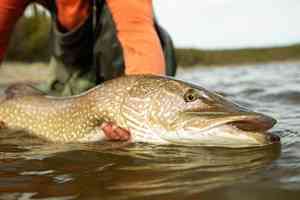


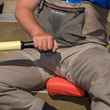


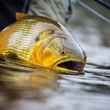



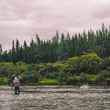

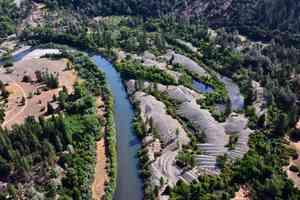
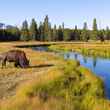
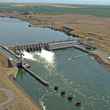

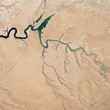
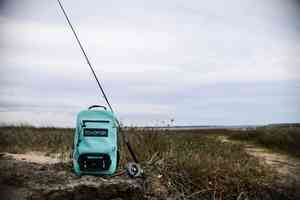

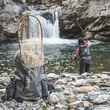
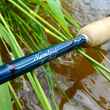
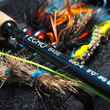
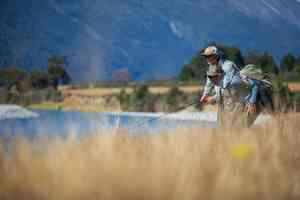
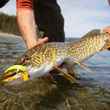





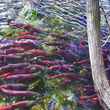
Comments